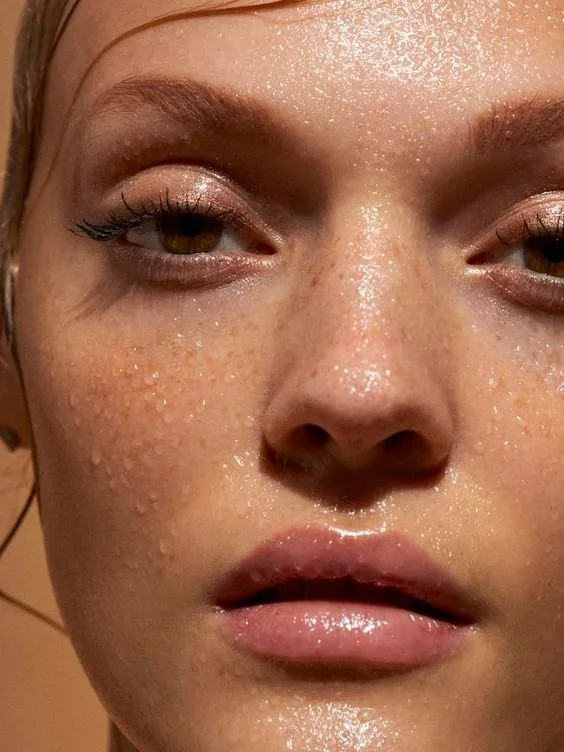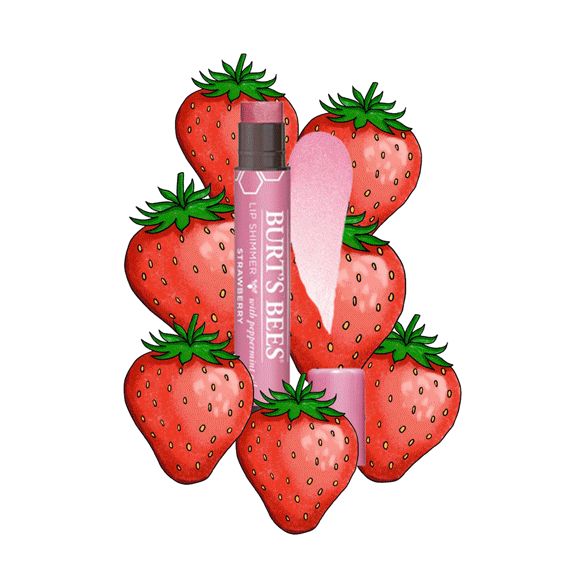There is a clean cosmetic boom thanks to increased ingredient transparency and good-for-you formulations. But with that comes confusion about what makes a product clean (or not). With no formal definition, we’ve gone to an expert to detail what clean beauty looks like in 2024, says editor Trudi Brewer. Read on to learn more.
Image BeautyEQ
Megha Chandan
Clean cosmetics are becoming more popular; some might even call this the industry's most significant trend. However, one brand believes sustainable practices and clean ingredients should be more than a trend or catchy phrase. We chatted with Sydney-based Megha Chandan, head of new product development at Australian made Nude by Nature, to understand why clean cosmetics work better for your skin and the planet. Read her advice below.
What does clean beauty mean?
While ‘clean beauty’ does not have a universal definition, it generally refers to cosmetics made without certain potentially harmful or controversial ingredients, such as parabens, sulfates, phthalates and other synthetic chemicals. Clean beauty prioritises natural, naturally derived ingredients that benefit the skin. Its ingredient lists are transparent and often produced with environmental sustainability and ethical practices in mind, such as sustainable sourcing and eco-friendly packaging. Most clean beauty brands are also cruelty-free (not tested on animals).
Where did the term originate from?
There is no single point of origin. The term gained significant traction in 2010 and has become synonymous with safe and pure cosmetic formulations and beauty products. However, it has evolved from various influences, such as the growing interest in natural and organic foods spilling over into the beauty category, increased concern about the environmental impact of synthetic chemicals and ingredients, and growing awareness of potentially harmful ingredients in cosmetic products. Finally, social media has helped spread information about product ingredients.
Can you define clean beauty vs green beauty vs natural beauty?
While these terms are often used interchangeably, there are some subtle differences between them: ‘Clean beauty’ focuses on products free from ingredients considered potentially harmful to the skin. It prioritises natural and safe ingredients to minimise the risk of skin irritation and potentially allergic skin reactions. It emphasises transparency in ingredient lists and often includes considerations for ethical sourcing and environmental impact.
’Green beauty’ primarily affects ecological sustainability and focuses on sustainable sourcing, eco-friendly packaging, and minimal environmental impact. It may include natural or safe ingredients that are environmentally friendly, too. It often emphasises organic ingredients and biodegradability. Finally, ‘natural beauty’ is used to describe products that include ingredients derived from nature, such as plants, botanicals, and minerals, and typically avoid the use of synthetic ingredients. It may also include minimally processed ingredients. Where natural beauty focuses on ingredient sources, ‘'clean beauty’ focuses more on ingredient safety, whereas ‘green beauty’ prioritises environmental impact. It's important to note that these terms aren't regulated, so their exact meanings can vary between brands. Additionally, a product can fall into multiple categories - for example, being both ‘clean’ and ‘natural’.
How about organic vs. natural? What does that mean in terms of cosmetics?
‘Organic beauty’ uses organically grown ingredients without synthetic pesticides, herbicides, or fertilisers and is produced without GMOs (genetically modified organisms). Requirements vary between certifying bodies, but products need 70-95 per cent organic ingredients to be labelled ‘organic’. In many countries, organic products must be certified by recognised organisations such as USDA Organic and EcoCert. The principal certifying body for organic beauty products in Australia is ACO (Australian Certified Organic). While organic products have a high natural content, this doesn't necessarily mean they are hypoallergenic or suitable for sensitive skin. It's also important to note that while ‘organic beauty’ products appeal to many consumers seeking natural options, ‘organic’ doesn't automatically mean safer or more effective.
What should we look for when shopping for clean, natural, green beauty?
Check ingredient lists. Look for transparent ingredient disclosure and recognisable, plant-based, and mineral ingredients, which are generally safer and gentler on the skin than synthetic chemicals. Do your research and avoid potentially harmful ingredients that may cause skin sensitivities or irritation (such as parabens, phthalates, and sulfates). Look for clear information on sustainable sourcing and ingredient choices and a brand’s willingness to communicate directly and clearly with customers on product queries. Seek natural products with safe and robust preservatives that ensure product stability, safety and efficacy. Certifications, such as Leaping Bunny or PETA, also matter for cruelty-free status. Choose products with recyclable, reusable or responsibly sourced FSC (Forest Stewardship Council) certified board packaging.
What chemical ingredients should we be wary of in our cosmetics?
Certain ingredients may cause concern due to potential health risks or sensitivities. Here’s what to avoid when reading cosmetic labels.
Parabens: Used as preservatives, parabens have raised concerns about their potential link to hormonal disruptions and have been identified as possible carcinogens.
Phthalates: Often found in fragrances and some packaging, phthalates are linked to concerns over skin irritation and other possible health issues.
Sulfates: Sodium lauryl sulfate (SLS) and sodium laureth sulfate (SLES) are common surfactants (foaming agents) in cleansers and can irritate sensitive skin and eyes.
Formaldehyde and Formaldehyde Releasers: Used as preservatives in some cosmetics, formaldehyde and formaldehyde releasers are possible carcinogens and linked to skin allergies.
Synthetic fragrance: These can contain unlisted chemicals and allergens, irritating the skin and triggering adverse reactions.
Triclosan: An antibacterial agent considered controversial due to possible links with hormone disruption and antibiotic resistance.
Hydroquinone: a skin bleaching agent used for skin lightening, it can irritate and is linked to other health concerns
Where are we at with clean beauty legislation in Australia and New Zealand?
Clean beauty is not legally defined as ‘clean beauty’. In Australia, the TGA (Therapeutic Goods Administration) regulates cosmetics with therapeutic claims, while AICIS (Australian Industrial Chemicals Introduction Scheme) oversees the introduction of industrial chemicals, including those used in cosmetics. In New Zealand, cosmetics are regulated under the Medicines Act 1981 and the Consumer Guarantees Act 1993. The EPA (Environmental Protection Authority) oversees the regulation of chemicals, including those used in cosmetics. Both Australia and New Zealand have regulatory frameworks to ensure the safety of cosmetics; however, ‘clean beauty’ is more of a marketing term than a legislatively defined category. Both countries have stringent safety regulations, but the specific criteria for ‘clean’ cosmetics depend largely on brand definitions.
What is mineral makeup, and why is it better than conventional makeup?
Mineral pigments are naturally derived from minerals, naturally occurring substances in rocks and the earth. The mineral pigments, primarily iron oxides, provide highly pigmented colour and coverage, so there’s no compromise on payoff. Free from synthetic, controversial, and potentially irritating ingredients commonly found in conventional makeup. Skin-friendly, it’s less likely to clog pores and is suitable for sensitive skin, as it’s free from harsh chemicals, fragrances, and synthetic dyes.
Editor Trudi Brewer shares A top-seller
Nude by Nature Natural Mineral CoverRadiant Loose Powder Foundation, $47.
Not all mineral makeup is created equal. Perhaps this powder is the jewel in the Nude by Nature mineral makeup crown. As their number one selling product, it has the accolades to support it. Made with 100 per cent natural ingredients and formulated without bulking fillers such as talc and bismuth oxychloride, synthetic ingredients such as silicones or parabens, or synthetic preservatives. Cruelty-free and PETA-certified, no animal testing has been performed, and all brushes are made from high-quality synthetic fibres. The range has 20 blendable shades that cover redness and pigmentation and offer SPF15 protection. This mineral makeup can be applied in a barely-there finish or layered to give you a full-coverage option. The 20 shades blend with most skin tones and all skin types, especially sensitive or blemish-prone.
Is Clean Beauty here to stay or just another trend?
Clean beauty has gained significant momentum in recent years. Several factors suggest that ‘clean beauty’ is a long-term shift rather than a short-lived trend. These include increasing consumer knowledge about ingredients and their potential effects, rising from a growing demand for transparency in formulations and regulatory changes. Some regions are implementing stricter regulations on cosmetic ingredients, which may push more brands towards cleaner formulations. Technological advancements such as biotechnology increase the use of natural preservatives and plant-based ingredients, making ‘clean beauty’ products safer and more effective than their synthetic counterparts. Health consciousness in the post-COVID world has also led to an ongoing interest in overall health and wellness that aligns with ‘clean beauty’ principles, prompting major beauty brands and retailers to invest in ‘clean beauty’ lines. The ‘clean beauty’ concept may evolve towards a more science-based approach and increased focus on evidence-based claims. Nude by Nature is at the forefront of this movement, using clinically proven ingredients and hybrid formulations to deliver high-performance makeup with effective skincare benefits.
Where should we start if we want to ‘clean’ up our beauty routines?
Educate yourself by reading ingredient lists and familiarising yourself with ingredients and their potential effects. Prioritise what's most important to you and decide which aspects of ‘clean beauty’ matter most: natural ingredients, sustainability, and cruelty-free. Research brands that disclose their ingredient lists and avoid harmful substances. Simplify and streamline your routine with multi-use products and responsibly recycle beauty product packaging.
Our favourites from the Nude by Nature makeup collection
Nude by Nature Virgin Blush, $27. Nude by Nature Natural Illusion Eye Palette, $45. Nude by Nature Absolute Volumising Mascara, $43. Nude by Nature Moisture Infusion Lipgloss, $28.
Finally, Why is no red lipstick in the Nude by Nature range?
The deep red colour in some lipstick products results from Carmine—a red pigment derived from insects (cochineal bugs that live as parasites on cactus plants) and used as a colourant in cosmetics. Carmine is considered controversial due to its animal origin and its association with possible allergic reactions. We are committed to creating 100 per cent naturally derived and cruelty-free make-up. So, our lip collection is free from Carmine and contentious ingredients like petroleum waxes, silicones, coal tar dyes, or synthetics. We include good-for-you ingredients such as Kakadu plum, shea butter, desert lime and tangerine oil.




















So, what’s wrong with talc in makeup? Discover why it’s on the nasties list.